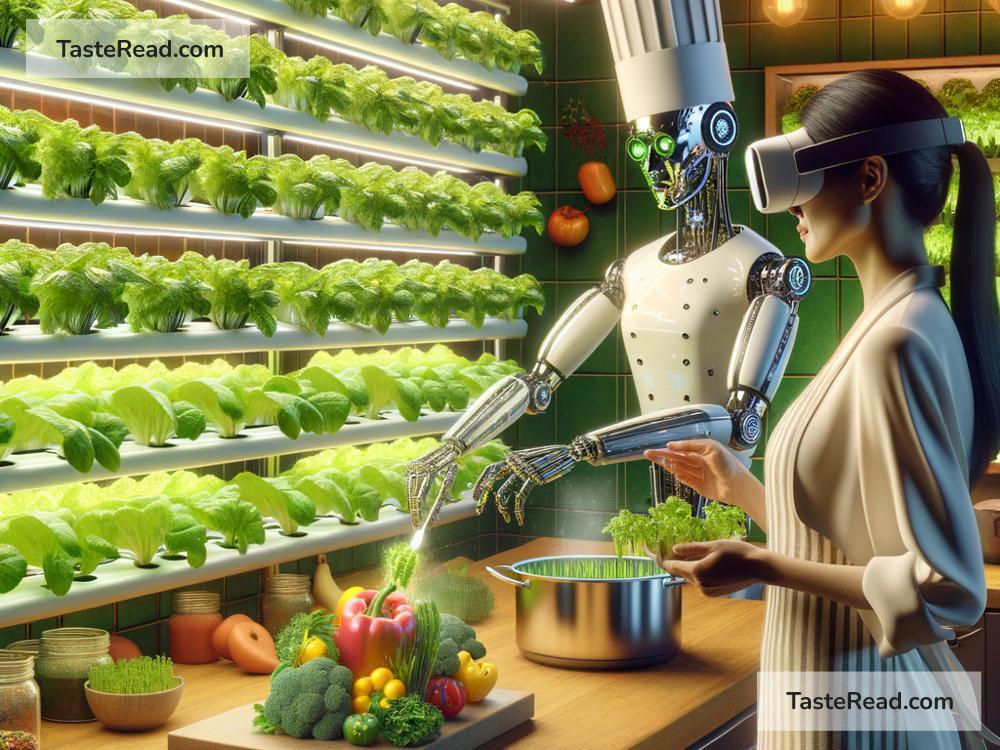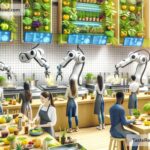The Future of Food and Collaborative Innovation
Have you ever wondered what food will look like in the future? Will we eat printed meals, or will farming move to spaceships? While no one knows for certain, one thing is clear: the way we produce, eat, and share food is changing rapidly. With a growing population, climate challenges, and food scarcity in some parts of the world, we need creative solutions to ensure everyone has enough to eat. Innovation and teamwork will play a huge role in shaping the future of food.
Let’s explore how food might evolve and why collaboration is so critical to solving the challenges ahead.
Why the Future of Food Needs Innovation
Food is a basic need for all of us, but producing enough healthy and sustainable food is becoming harder. Global issues like climate change, water shortages, and farmland loss make it difficult to grow food the way we have been doing for centuries. At the same time, the world’s population is expected to reach nearly 10 billion by 2050. To feed everyone, we will need creative ideas that rethink how we produce food and where it comes from.
Scientists, farmers, inventors, and even tech companies are already working on solutions. For example:
- Vertical Farming: Instead of growing crops in wide, flat fields, farms of the future might grow food in skyscrapers using hydroponic systems where plants grow without soil.
- Lab-Grown Meat: What if meat didn’t come from animals? Companies are already using technology to grow meat in labs, reducing the need for farming animals and cutting down on greenhouse gas emissions.
- Food Printing: Imagine a 3D printer that could “print” your favorite pasta dish—or even an entire pizza! This futuristic idea could turn raw ingredients into perfectly shaped meals.
- Alternative Proteins: From crickets to algae, scientists are exploring nutritious sources of protein that may be more environmentally friendly than traditional farming.
The Role of Collaboration in Solving Food Challenges
One important thing to remember is that no single person or company can solve the global food problem. Big challenges like food security require teamwork across industries, countries, and communities. Collaboration allows people with different skills and ideas to come together to create better solutions.
Here are some examples of collaborative innovation in food:
-
Farmers and Scientists Working Together
Farmers have valuable experience with growing food, while scientists can offer new tools to make farming more efficient. By teaming up, they can develop crops that grow faster, use less water, or resist pests naturally. For example, some farmer-scientist teams are experimenting with drought-resistant grains to help areas with little rainfall. -
Global Partnerships Against Hunger
Nonprofit organizations, governments, and businesses are joining forces to fight hunger around the world. Collaborative programs bring advanced farming techniques or technology to places that need them most. For instance, the United Nations works with corporations to introduce sustainable agriculture methods in developing countries. -
Tech Companies and Food Innovators
Big tech companies like Google and Microsoft are helping food creators with innovations like artificial intelligence (AI). AI can predict weather patterns and help farmers know the perfect time to plant and harvest their crops. Robotics and drones are also being used to reduce waste and optimize food production. -
Community-Led Food Solutions
In cities where fresh food is hard to access, neighborhoods are coming together to start shared gardens or urban farms. These spaces not only produce fresh fruits and vegetables but also bring people closer to nature and each other.
What Role Can You Play in the Future of Food?
You may not be a scientist or a farmer, but every person can contribute to shaping the future of food. Here are some things you can do:
- Support Local Farms: Buying locally grown food supports sustainable farming practices and reduces the carbon footprint of transporting food.
- Reduce Food Waste: Nearly one-third of all the food produced gets wasted. By eating leftovers or buying only what you need, you can help reduce waste and conserve resources.
- Try Alternative Foods: Give plant-based proteins or other innovations a chance. Every time you buy environmentally friendly foods, you support companies creating solutions for the planet.
- Learn and Spread Awareness: Educate yourself and share knowledge about global food challenges. The more people understand the urgency, the faster we can collaborate on solutions.
The Bright Future Ahead
The future of food doesn’t just rely on technology—it also relies on us. Collaborative innovation will allow people from different fields, countries, and perspectives to create a food system that’s better for everyone. With new ideas like vertical farming, lab-grown meat, and community gardens, we have a real chance to solve big problems like hunger and environmental harm.
Imagine a world where food is fresh, affordable, and sustainable for all people. That future starts today, with creativity and teamwork. Whether you’re a farmer, a scientist, or just someone who cares about the planet, you can play a role in ensuring a healthier food system for tomorrow.
So, the next time you sit down for a meal, think about how food might look in 10, 20, or even 50 years—and how each one of us can help make that future brighter for everyone.

